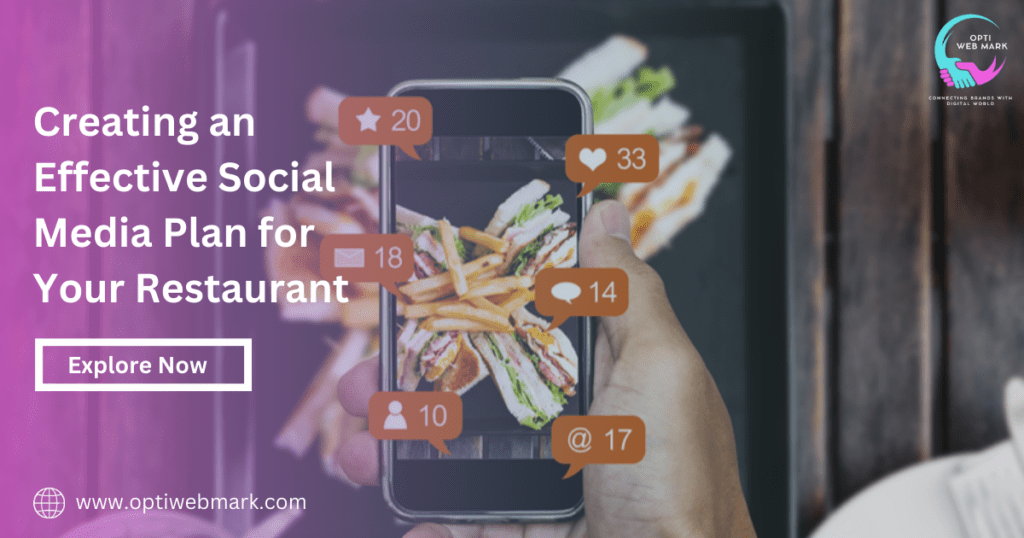
Imagine two pizza restaurants in the same neighborhood. One has a vibrant social media presence, posting mouth-watering photos, engaging with customers, and running fun contests. The other hardly posts anything and rarely responds to comments. Which one do you think is more popular? The first one, of course! That’s the power of a strong social media marketing strategy.
In today’s digital age, a solid social media presence can make a huge difference for your restaurant. Let’s dive into how you can create a winning social media marketing strategy for your restaurant.
Understand Your Audience in Social Media Marketing
Define Your Target Audience:
Who are your ideal customers? Are they young professionals, families, or food enthusiasts? Knowing who you want to attract helps tailor your content to their tastes and preferences.
Create Buyer Personas:
Develop profiles of your typical customers. For instance, Sarah is a 30-year-old foodie who loves trying new dishes and shares her experiences on Instagram. John is a busy dad who looks for family-friendly places. Craft content that speaks to these personas.
Engage with Your Audience:
Use social media insights and analytics to understand what your audience likes. What posts get the most likes, comments, or shares? Focus on creating more of that content.
Setting Clear Goals
SMART Goals:
Set Specific, Measurable, Achievable, Relevant, and Time-bound goals. Instead of just saying, “We want more followers,” say, “We want to increase our Instagram followers by 20% in the next three months.”
Types of Goals:
Your goals might include increasing brand awareness, engaging with customers, or driving traffic to your website. Be clear about what you want to achieve.
Measurement:
Use tools like Facebook Insights, Instagram Analytics, or Google Analytics to track your progress. Are you meeting your goals? If not, what can you change?
Choosing the Right Platforms
Platform Overview:
Each social media platform has its strengths. Facebook is great for community building, Instagram is perfect for visually showcasing your dishes, and TikTok is fantastic for creative, short videos.
Platform Selection:
Choose platforms where your audience spends most of their time. If your target audience is millennials, Instagram and TikTok might be the best choices.
Platform Features:
Utilize features like Instagram Stories, Facebook Live, and TikTok challenges to engage with your audience in unique ways.
Crafting Compelling Content
Content Types:
Mix up your content with photos, videos, stories, live streams, and user-generated content. Show behind-the-scenes footage, highlight special dishes, or share customer testimonials.
Content Calendar:
Plan your posts ahead of time. Consistency is key. Use tools like Hootsuite or Buffer to schedule your posts.
Storytelling:
People love stories. Share your restaurant’s journey, introduce your team, or tell the story behind a special dish. Make your content personal and engaging.
Leveraging Influencers and Partnerships
Finding Influencers:
Look for influencers who align with your brand. They don’t need to have millions of followers. Sometimes, local influencers with a dedicated following are more effective.
Collaboration Ideas:
Host events, run giveaways, or create collaborative content with influencers. This can help you reach a wider audience.
Benefits:
Influencers can boost your reach, credibility, and engagement. Their followers trust their recommendations, which can drive more customers to your restaurant.
Engaging with Your Audience
Responding to Comments and Messages:
Always respond to comments and messages. Show your audience that you value their feedback and appreciate their support.
Community Building:
Create a loyal online community by engaging with your audience regularly. Ask questions, run polls, and encourage discussions.
User-Generated Content:
Encourage your customers to share their experiences and tag your restaurant. Repost their content to show appreciation and build a sense of community.
Paid Advertising and Promotions
Types of Social Media Ads:
Use different ad formats like boosted posts, carousel ads, and story ads to reach more people.
Targeting Options:
Use targeting options to reach your ideal audience. You can target by location, age, interests, and more.
Budgeting and ROI:
Set a budget for your social media ads and monitor the return on investment. Adjust your strategy based on what works best.
Analyzing and Adjusting Your Strategy
Analytics Tools:
Use tools like Facebook Insights, Instagram Analytics, and Google Analytics to track your social media performance.
Key Metrics:
Monitor metrics like engagement, reach, and conversions. Are your posts getting the interaction you want? Are they driving traffic to your website?
Continuous Improvement:
Use the data you collect to refine and improve your strategy. What works? What doesn’t? Keep experimenting and adjusting.
Conclusion
Building a winning social media strategy involves understanding your audience, setting clear goals, choosing the right platforms, crafting compelling content, leveraging influencers, engaging with your audience, using paid ads, and analyzing your results.
Ready to elevate your restaurant’s social media presence? Contact Opti WebMark today to get started on creating a powerful social media strategy that will attract more customers and boost your business.
